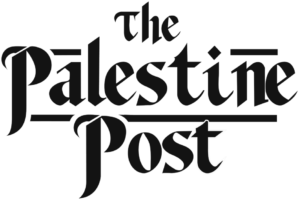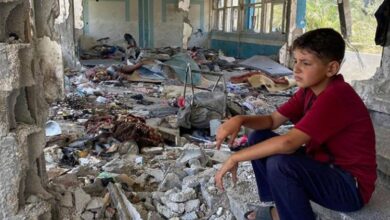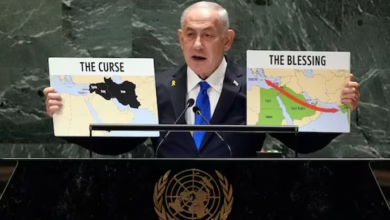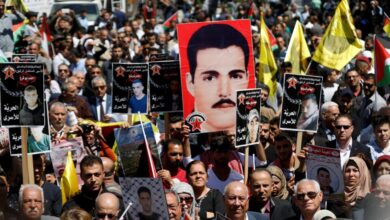The Evolution of Palestinian Media: From Traditional Outlets to Digital Resistance
Media has long been one of the most influential factors in shaping the course of wars and conflicts. Whether through delivering news and information or guiding public opinion locally and internationally, media plays a pivotal role. Throughout history, it has been a powerful tool to influence audiences, either by revealing the truth or sometimes manipulating it.
Since the early days of the Israeli occupation, Palestinian media has played a crucial role in documenting the suffering of the Palestinian people and exposing the violations they face. Over the years, Palestinian media evolved from newspapers to today’s digital platforms, where smartphone screens capture and broadcast events from the east to the west, from the river to the sea, calling for Palestinian freedom on an international level.
The History of Palestinian Media
The evolution of Palestinian media has transitioned from traditional outlets like newspapers and radio to more modern platforms such as television and digital media. Over the years, Palestinian journalists and media professionals have boldly documented events, despite the challenges and dangers imposed by the occupying forces. The first newspaper owned by Palestinians was Palestine, founded in 1911 by Issa and Daoud Al-Issa.
This newspaper became a symbol of Palestinian identity and faced multiple challenges, including a brief closure by the British Mandate in Palestine.
By the 1950s, there were four Palestinian newspapers operating in the West Bank, which was part of Jordan at the time: Palestine, Al-Manar, Al-Difa’, and Al-Jihad (the latter two merged in 1951 to become Al-Quds). In 1936, the first radio service was introduced in Palestine, broadcasting in Arabic from Jerusalem.
Despite the many obstacles faced by Palestinian media, it has remained a powerful tool for resisting occupation and documenting Palestinian heritage.
In 1968, Mahmoud Abu-Zalaf managed to obtain an Israeli license to reprint Al-Quds in East Jerusalem. This timeline extended to 1972, when the Palestinian Liberation Organization (PLO) launched Radio Palestine from Cairo. Local audiovisual broadcasting did not emerge until the 1990s, as Israeli authorities continued to prevent any Palestinian publications, radio, or television stations from operating outside Jerusalem until the Oslo Accords were signed in 1993.
The media landscape expanded further with the establishment of the Palestinian Broadcasting Corporation in 1994, which began radio broadcasting from Jericho that same year.
Television broadcasting followed in 1996, and by 2010, there were 31 private TV channels and 70 radio stations across the West Bank and Gaza.
Internet access, first introduced to Palestine in 1996, also played a significant role in the dissemination of Palestinian news worldwide. However, internet infrastructure was controlled by Israel, which was accused of deliberately limiting bandwidth and connection speeds. Nevertheless, internet usage surged, becoming an essential part of Palestinian media.
Today, social media platforms have become increasingly important as tools for Palestinians to share news, visuals, and their voices. Since the start of the Israeli occupation, Palestinian media has played a critical role in documenting the violations endured by the Palestinian people. Platforms like Facebook, Twitter, and Instagram have been widely used, especially since the October 7th war on Gaza, with Palestinians uploading footage of ongoing Israeli attacks and massacres. These platforms have allowed Palestinians to reach a global audience and present an unfiltered view of the ongoing situation through real-time videos and images, amplifying their story to the world.
Media as a Tool of War and Resistance
Propaganda
The Israeli occupation attempts to shape its messages and information to serve its political and military goals by using content that distorts the Palestinian narrative and justifies its settlement policies and methods of repression.
Whether these claims are believed or not largely depends on the sources people rely on for news.
Western media outlets have systematically framed the news in ways that favor the occupation, often using phrases like “attack on Israel” or “terrorist attack on Israeli civilians,” while omitting the truth about the massacres faced by Palestinians in Gaza since the beginning of the October 7 war.
This emotional manipulation is used to win over audiences and position Israel as the victim, creating a one-sided narrative by using three “D” :
- Delegitimizing Palestinians and treating them as a fictional people who never formed a distinct national group or had their own state in history.
- Discrediting Palestinians as violent terrorists and anti-Semitic hatemongers.
- Dehumanizing Palestinians to show Palestinians mainly as inveterate killers of Jews.
These and similar propaganda points worked very efficiently in the past century to establish the state of Israel and to maintain its military dominance over all the Arabs. Yet in the current round of fighting in Gaza, Israeli exaggerations, and diversionary tactics do not work these days because the majorities of citizens across the West no longer get their news from mainstream media that has parroted Israeli views, but rather from social media and independent publications that point out Israel’s ongoing criminal activities.
Palestinians today also speak directly from Palestine to the world through social media, regular visits, and contacts through churches, unions, universities, progressive synagogues, African-American groups, and others who have seen through the propaganda and have experienced the realities of subjugated, occupied Palestinians, on the ground , from here we will talk about the media as a tool for resistance
Media as a tool of resistance
The dissemination of information about events in Gaza through social media and television by journalists and resistance media has significantly disrupted the Israeli home front and launched a psychological war against it. This was largely due to the complete ability to control the media landscape in response to the Israeli narrative.
The war not only showcased the heroes of combat but also highlighted journalistic heroes. According to the government media office in Gaza, approximately 171 journalists have been martyred since the onset of this genocidal war, all striving to convey the true image of the situation to the world by :

1. Covering Personal Testimonies:
Palestinian journalists utilized social media platforms to document personal testimonies from civilians affected by the attacks. For instance, videos showing families searching for their loved ones under the rubble were shared, moving viewers and prompting calls for international intervention.
2. Live Broadcasting from the Scene:
Many television channels conducted live broadcasts of events from Gaza. This coverage documented moments of the Israeli assault and exposed violations, facilitating the rapid dissemination of truth to the world.
3. Using Hashtags to Combat Media Misrepresentation:
During the war, Palestinians adopted hashtags like #GazaUnderAttack and #AggressionOnGaza on social media platforms. This approach helped gather information and clarify facts about the events, making the Palestinian narrative clearer in the face of misleading information.
Challenges Facing Palestinian Media
Despite the significant successes achieved by Palestinian media in conveying their voice to the world, they continue to face numerous challenges that impede their efforts.
1. Restrictions and Censorship:
The Israeli occupation imposes severe restrictions on Palestinian journalists, including limiting their movement, preventing access to certain areas, and enforcing censorship on the content being published.
2. Attacks on Journalists:
For many years, numerous Palestinian journalists have been targeted, whether through direct killings, arrests, or assaults aimed at intimidating them and hindering their ability to perform their duties. According to Human Rights Watch (HRW) , several Palestinian journalists have been killed while covering events, while others have been arrested on false charges.
3. Financial Constraints:
Palestinian media, particularly independent outlets, often suffer from a lack of financial resources, forcing them to rely on external funding that may come with specific political conditions.
4. Smear Campaigns:
Palestinian media faces ongoing smear campaigns from Israeli and international media, which attempt to depict the Palestinian struggle as terrorism and distort the image of Palestinian resistance in the eyes of the global community.
Achievements of Palestinian Media
Despite these obstacles, Palestinian media has made notable achievements in recent years. Through intensive media coverage of attacks on Al-Aqsa Mosque and wars in Gaza, Palestinian journalists have succeeded in generating international solidarity for the Palestinian cause. Moreover, youth movements and activists on social media have effectively mobilized global public opinion, leading to organized demonstrations in many countries in support of Palestine. These accomplishments demonstrate the resilience of Palestinian media in its ongoing struggle to tell their story and advocate for their rights on the world stage.





